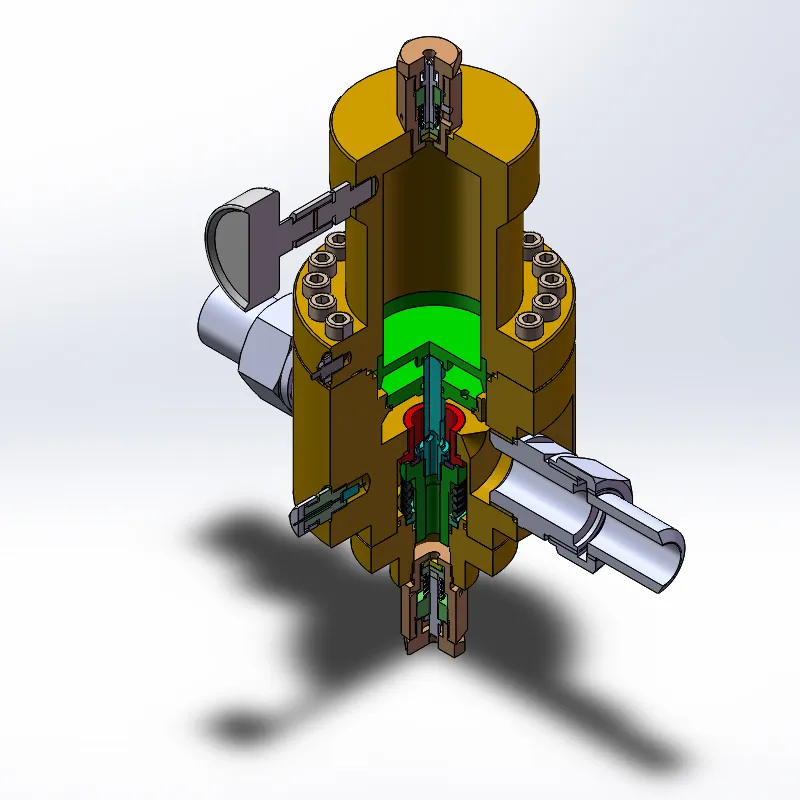
Oct . 12, 2024 12:11
Back to list
Gas Separation Techniques for Enhanced Coalescing Efficiency in Industrial Applications
Gas Coalescer Enhancing Efficiency in Gas Processing
In various industrial applications, the need for efficient separation of liquids from gases is paramount. One of the crucial technologies employed in this regard is the gas coalescer. This equipment plays a significant role in ensuring the purity and efficiency of gas processes in sectors such as oil and gas, petrochemicals, and wastewater treatment. Understanding how gas coalescers operate and their importance can provide insights into enhancing operational efficiency and reducing costs.
At its core, a gas coalescer is designed to remove liquid contaminants from gas streams. Typically, gas streams can contain aerosols, water, and other liquid pollutants that could interfere with downstream processes or lead to equipment damage. Gas coalescers utilize a two-step process to achieve the separation of liquids from gases. First, the device captures the small liquid droplets suspended in the gas phase. This is achieved through a filtration mechanism utilizing coalescing filter elements that have a specific arrangement of fibers. These fibers create a tortuous path that allows smaller droplets to collide and coalesce into larger ones.
Once the droplets have coalesced to a sufficient size, gravity plays a crucial role in their separation. The larger droplets descend through the coalescer and are gathered in a sump or separated for further processing. The clean, dry gas then exits the coalescer, ready for further use or to be passed into other processing stages.
gas coalescer

The operational efficiency of gas coalescers is influenced by several factors, including flow rates, temperature, pressure, and the characteristics of the gas and contaminating liquids
. Advanced gas coalescer designs incorporate features that enhance their performance. For instance, using hydrophobic filter materials can improve liquid removal efficiency by ensuring that water and other contaminants do not cling to the filter media, thereby extending the life of the filter elements.Moreover, regular maintenance and monitoring are critical to ensure the gas coalescer operates at optimal performance. Over time, the filter elements can become saturated with contaminants, leading to a decrease in efficiency. By employing techniques such as differential pressure monitoring across filter elements, operators can identify when maintenance is necessary, thus avoiding unplanned shutdowns and maintaining consistent gas quality.
In sectors like oil and gas, where the purity of gas streams is vital for safety and compliance with environmental regulations, the role of gas coalescers becomes even more prominent. They help maintain the integrity of equipment by preventing corrosion and fouling, ultimately resulting in lower operational costs. Furthermore, by ensuring that gas streams are free from contaminants, companies can improve overall process efficiencies, leading to increased productivity and reduced downtime.
In conclusion, gas coalescers are indispensable tools for ensuring the purity and efficiency of gas processing applications across various industries. Through their sophisticated design and operational principles, they effectively separate liquid contaminants from gas streams. As industries continue to push for higher efficiency and stricter compliance with environmental regulations, the significance of gas coalescers will only grow. Investing in the right technology and ensuring regular maintenance can lead to significant returns in productivity, safety, and cost-effectiveness.
Next:
Latest news
-
Safety Valve Spring-Loaded Design Overpressure ProtectionNewsJul.25,2025
-
Precision Voltage Regulator AC5 Accuracy Grade PerformanceNewsJul.25,2025
-
Natural Gas Pressure Regulating Skid Industrial Pipeline ApplicationsNewsJul.25,2025
-
Natural Gas Filter Stainless Steel Mesh Element DesignNewsJul.25,2025
-
Gas Pressure Regulator Valve Direct-Acting Spring-Loaded DesignNewsJul.25,2025
-
Decompression Equipment Multi-Stage Heat Exchange System DesignNewsJul.25,2025

